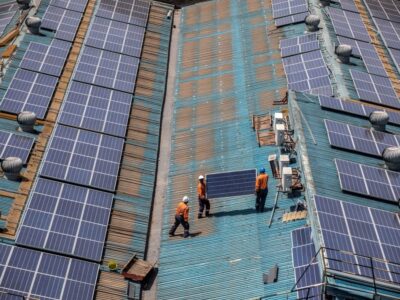Producer inflation and leading business cycle indicator data is under the spotlight this week.
On Wednesday Stats SA will publish the producer price index (PPI) for March. Economist expect inflation to have remained elevated. In February, producer inflation slowed from the previous period, reaching 12.2% year on year from 12.7% in January.
However, on a monthly basis producer price pressure was 0.6%, rebounding from a 0.6% monthly decline in the previous month, and compared to forecasts of a 0.7% rise.
According to Investec economist Lara Hodes, PPI inflation is forecast to have lifted by about 1.4% month on month in March, translating to 11% when measured on an annual basis.
“Upward pressure likely stemmed from the coke, petroleum, chemical, rubber and plastic products grouping, in which fuel price dynamics are captured on the back of a rise in the petrol and diesel price at the beginning of March,” said Hodes.
“Manufactured food price inflation, another large component of the PPI index, is likely to have remained elevated in March, with the dire electricity supply situation weighing heavily on production costs.”
The Reserve Bank’s leading business cycle indicator data for February will be released on Tuesday.
In January, the leading business cycle indicator — which examines the direction in which real economic activity is moving in real-time — slowed down 0.1% from a month earlier, after a downwardly revised 1.9% fall in December 2022. This was the fourth consecutive period of declines in business indicators.
The indicator is calculated on the basis of several components including building plans approved, new passenger vehicles sold, commodity price index for main export commodities, index of prices of all classes of shares traded on the JSE, job advertisements, volume of orders in manufacturing and gross operating surplus as a percentage of GDP.
The weakness in the indicator for January was broad-based, with eight constituent variables declining while only two increased.
“Generally, the leading indicator informs our view of the elevated risk of recession or subdued quarterly growth profile,” said FNB economists in a note.
“The high-frequency data to date is pointing to a mild recession, with the persistence of load-shedding at a higher intensity being a key feature,” they said. “Nevertheless, the prevailing economic environment is highly volatile and uncertain, with wide prediction bands.”
On Friday, data on the trade balance for March will be published. In February, the trade balance amounted to a R16.13bn surplus from a R22.71bn deficit in January.
The surplus reflected monthly export growth of 10.7%, while imports declined more significantly by 14.8%. Compared to the same month last year, exports grew 8.7%, reflecting a slight increase from 6.7% in January.
Imports grew 5.9%, reflecting a significant moderation from 28.1% in January. Nevertheless, imports are up 16.8% for the year to date, while exports are up by 7.7%. This, according to FNB economists, “is consistent with our view of a wider current account deficit.”
Data on private sector credit extension (PSCE) for March will be released on Friday.
According to Hodes, PSCE is expected to have eased modestly when measured on an annual basis in March to about 7.9%, after an 8.3% lift in February, which was largely underpinned by the 8.8% year-on-year pick up in corporate credit demand which makes up over half of total PSCE.
“The broader economic weakness and higher borrowing and debt servicing costs could curtail the extent of demand for private sector credit,” said the FNB economists.











Comments